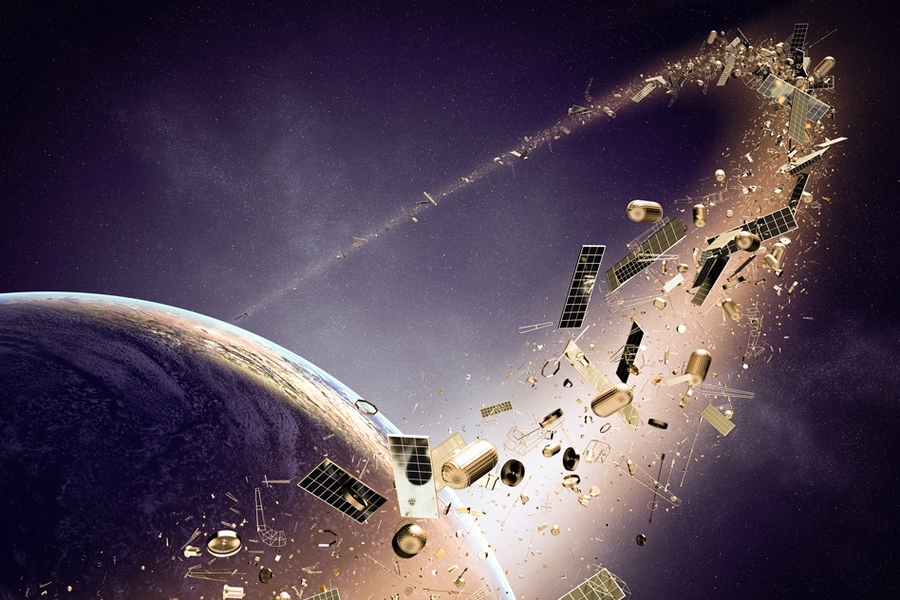SPACE DEBRIS
Context:
Remnants of an uncontrolled Chinese rocket (The long march 5B) reentered the atmosphere over the Indian Ocean, the risk of space junk and its uncontrolled descent.
Space junk:
also known as space debris .which is divided into 2 types
1) natural space debris: which is nothing but small pieces of cometary and asteroidal material called meteoroids
2)artificial space debris: It is any piece of machinery or debris left by humans in space which includes dead rockets, spent rocket stages, anti-satellite systems (asat)etc.
This free-floating space debris is a potential hazard for operational satellites and colliding with them can leave the satellites dysfunctional.
This is called Kessler syndrome.

ROCKET DEBRIS:
- Recently the 22-tonne core stage of the Chinese rocket The long march -5B hurtled uncontrollably back to the earth, and there were fears that it might hit a populated area.
- The long march -5b blasted off on July 24 to deliver a laboratory module to the new Chinese space station under construction in orbit.
- Generally, the core or first stage of a rocket is made up of heavy pieces that usually don’t reach orbit after liftoff, and fall back safely along a near-precise projected trajectory.
- If they do enter an orbit, then a costly de-orbit manoeuvre is required for a steered and controlled return using engine burn. Without de-orbit manoeuvre, the orbital core stage makes an uncontrolled fall
UNCONTROLLABLE RE-ENTRY :
- Remnants from china’s long march -5b.s core stage known for this uncontrolled fall, the reason is a difference in the mission sequence where the core stages reach orbit, and then crash back.
- According to reports, most nation’s rockets, separate the launcher from the payload before leaving the atmosphere. an extra engine then gives the payload a final boost. but china’s 5b series does not use a second engine and pushes right into orbit.
- Difficulties to track uncontrolled descents.
- The variables involved make it difficult to precisely track the re-entry time and drop zone of rocket debris in uncontrolled descents. the factors are atmospheric drag, variations in solar activity, and angle and rotational variation of the object among others.
- A miscalculation of even a few seconds in re-entry time would result in the final resting place of the debris changing by a hundred km.
Laws regulating space junk:
The Space liability convention of 1972, defines responsibility in case a space object causes harm. according to the treaty “ A launching state shall be liable to pay compensation for damage caused by its space objects on the surface of earth or to aircraft, and liable to its fault in space. The convention also provides for procedures for the settlement of claims of damage.
However, there is no law against space junk crashing back to earth
Solutions to tackle Space debris: moving an object out of the way by altering its orbit is one of the methods of diverting potential crashes. but it needs constant observation of debris
NASA's space debris sensor: orbits the earth on the international space station, it will detect the mm-sized debris for 2 years, providing information on whatever hits it such as size, velocity, density etc
Deorbit mission: European space agency’s e.deorbiter mission is developed to grasp space junk or catch it.
REMOVE debris is a satellite research project intended to demonstrate various space debris removal technologies.
Project NETRA(network for space objects tracking and analysis ): ISRO’s early warning system in space to detect debris and other hazards to Indian satellites.



